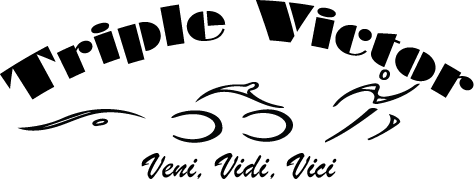Training Management #
Training management is the encompassing theory used by coaches and athletes to dictate training decisions. While often applied to periodization models, it can also apply to training load models. For example, athletes may use a Static Training Management approach to their periodization, resulting in clearly defined training blocks such as the “base phase.” At the same time, athletes may use a Dynamic Training Management approach to their training load. Dynamic Training Management matches the loading progression from microcycle to microcycle based on training adaptation outcomes. In this scenario, the athlete may transition from phase to phase following a set calendar which would dictate the type of work and intensity while adjusting the volume of work based on objective and subjective recovery metrics and training outcomes.
Static Training Management #
Static Training Management progresses an athlete through specific phases of work and recovery designed to influence a particular adaptation. Static Training Management is the traditional model used by nearly all training programs. In a Static Training Management model, the length of time available to prepare for the key event (A-Race) and the athlete’s athletic age dictate the length of each phase.
For example, a triathlete following a Static Training Management model may spend 6-18 weeks building their aerobic base followed by 6-12 weeks building their threshold, 4-8 weeks building their VO2max, and 4-8 weeks of race-specific work and tapering. The athlete would adjust the length of each phase based on the time between key events.
Static Training Management models are standard due to their vast history of use, ease of implementation, and success rate. Examples include:
- Basing periodization on a set flow of training blocks.
- Using a standard load progression such as a set rate (10% rule).
- Maintaining set recovery periods, such as every Monday and every third week.
Dynamic Training Management #
The word dynamic has two applicable definitions: “a force that stimulates change or progress within a system” and “characterized by constant change, activity, or progression.” Unlike the traditional Static Training Management model, which may flow through specific training phases focused on specific work, Dynamic Training Management adapts based on the previous phase or cycle’s outcomes.
Dynamic Training Management looks at how the training has influenced adaptations and uses shifts in focus and loading to maintain constant progress. The main idea of Dynamic Training Management is that an athlete’s response to training dictates the subsequent training and progression. Dynamic Training Management requires well-defined metrics and performance objectives that dictate the shifts in training focus.
Coaches, trainers, or athletes manage Dynamic Training Management by mesocycle or microcycle. For example, the training program may shift week to week based on microcycle outcomes or every few weeks based on mesocycle results. Like Static Training Management, athletes and coaches can use Dynamic Training Management for Periodization, Load Management, or both. For example, a coach may progress an athlete using a Dynamic Periodization approach based on physiological testing while also dynamically managing training load through objective and subjective metric trending.
Traditional coaching rarely uses dynamic training protocols due to routine physiological and field testing requirements. Additionally, dynamic and fluid methods require long-range planning with trial and error as athletes are not following “tried & true” protocols that progress them from start to finish. Athletes often become frustrated with dynamic and fluid approaches as they focus on the trees vs. the forest.
However, research shows that dynamic and fluid training is superior to static methods as it allows athletes to do precise work unique to their biopsychosocial needs. By focusing on underlying structural adaptation, athletes will find that their long-range functional capability is heightened compared to traditional methods.
Fluid Training Management #
Fluid is a substance that has no fixed shape and yields easily to external pressure. Like Dynamic Training Management, Fluid Training management involves adapting training protocols based on athlete response to training. However, Fluid Training Management uses day-to-day adaptations based on subjective and objective metrics. For this approach, adjustments include the day-to-day response to biopsychosocial pressures often measured through health metrics and screenings. For example, an athlete may use a recovery score and how they feel to determine that an interval workout should be moved to another day and replaced with active recovery.
Research using EGG and ECG-based metrics to determine the potential of trainability between endurance, strength, power & speed, or skills acquisition is advancing the use of Fluid Periodization. At the same time, research regarding interval intensity and structure shows that the timing of phases and blocks is not as crucial as getting the work done. For example, an athlete could do a block of FTP work, AnT work, and VO2max work as individual blocks in any order and get near the same results.
Research has shown that athletes following a Fluid Training Management plan compared to their peers following a Static Training Management plan will see a 110-150% improvement with 10-15% less training. Fluid Training Management is the least used training model due to the data analysis required and the rapid shifting of training stimulus daily.






Responses